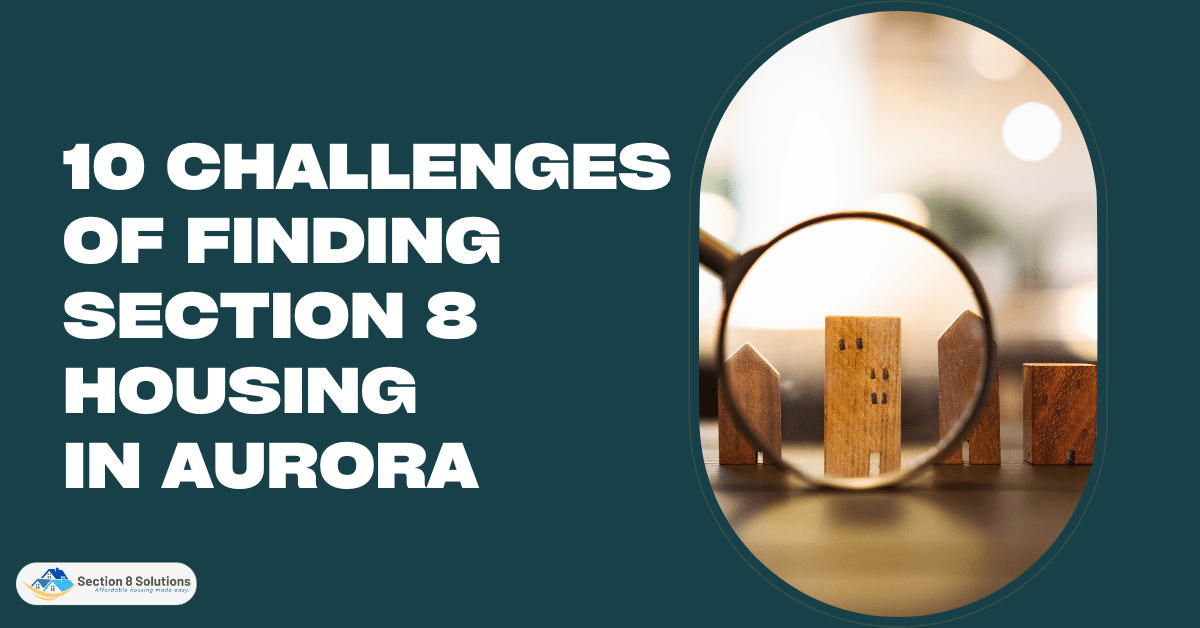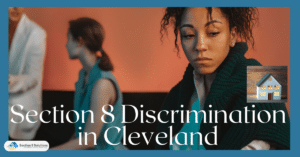Navigating the Section 8 housing market in Aurora presents unique challenges for many. From limited property availability to stringent qualification criteria, potential tenants often find themselves in a labyrinth of bureaucracy. Add to that, misconceptions about the program can further complicate the search, making it imperative to be well-informed and proactive.
In this blog, we will shine a light on these hurdles, taking a deep dive into the complexities and nuances that both landlords and tenants face.

1. Limited Property Availability
Aurora, known for its diverse culture and growing economy, is experiencing a significant housing crunch, and the demand for Section 8 housing amplifies this. Population growth, driven by both natural factors and in-migration, has surged in recent years. As more people move into the city, the demand for housing in general, and affordable housing in particular, has shot up. Meanwhile, economic shifts, such as changing job markets drawing more workers to the city and increased real estate investments driving property prices, have made affordable properties scarce.
2. Stringent Qualification Criteria
While the Section 8 program’s primary intent is to assist those in dire need of housing assistance, the stringent criteria can often be a barrier. Aurora, like many cities, requires applicants to meet specific income levels, adjusted for family size. This means a larger family with a slightly higher income might still face difficulties securing housing.
Furthermore, certain priority conditions, such as being elderly, disabled, or having veteran status, can play a role in application ranking. With the deluge of applications pouring in, and the limited housing vouchers available, many deserving families often find themselves sidelined, not necessarily due to lack of need, but due to the overwhelming competition and rigid criteria.

3. Bureaucratic Hurdles
The path to securing Section 8 housing isn’t just about need; it’s also about navigating the intricate bureaucratic process. Applicants face a mountain of paperwork starting from the initial application stage, moving on to background checks, and then to yearly reviews to ensure continued eligibility. Each stage presents potential pitfalls – an overlooked section, an outdated document, or a missed appointment can result in delays or even application denials. And while these steps are designed to ensure the program’s integrity, for many, it feels like a daunting maze.
4. Misconceptions about Section 8
The Section 8 program is no stranger to misconceptions, and these myths can be detrimental. One widespread belief is that Section 8 is akin to free housing, which is far from the truth. Tenants still have to contribute a portion of their income towards rent. On the other hand, some landlords and communities believe that Section 8 properties are of lower quality or that tenants are troublesome, dissuading them from participating.
These misconceptions not only reduce the available housing stock but also create unfounded biases. It underscores the importance of community education and awareness campaigns to dispel these myths and ensure the program’s successful implementation.

5. Safety and Quality Concerns
Every tenant dreams of a safe and comfortable home, and this is no different for those under the Section 8 program. However, concerns about the safety and quality of Section 8 properties have been raised time and again. While Aurora has set property standards and conducts regular inspections, not every violation or concern is caught in these checks. Some tenants report issues like faulty wiring, plumbing problems, or inadequate heating, which can pose serious risks. The onus is not just on the authorities but also on landlords to maintain properties and on tenants to report issues promptly.
6. Financial Barriers
On the surface, the Section 8 program appears as a financial relief for many, but there’s more than meets the eye. Initial hurdles like application fees can deter some from even starting the process. Once approved, tenants might face substantial security deposits which can be challenging for those already financially stretched.
Additionally, while rent might be subsidized, utility costs, which can increase based on consumption and regional pricing changes, are often borne by tenants. Landlords, while benefiting from consistent rent payments, might experience financial inconveniences due to delays in government payments or additional maintenance costs not covered by the tenant’s contribution.

7. Landlord Reluctance
Landlords form an essential pillar of the Section 8 program, but many in Aurora exhibit reluctance. There’s a pervasive fear of potential property damage, fueled by negative anecdotes or misconceptions about Section 8 tenants. Additionally, the perceived bureaucratic red tape associated with the program, from paperwork to property inspections, can seem daunting.
The legal intricacies, such as ensuring properties meet set standards and the potential penalties for violations, add another layer of concern. Combined with fears of inconsistent payments, many landlords deem it easier to rent out their properties without the constraints of the Section 8 program.
8. Fluctuating Housing Assistance Payments
The Section 8 program’s lifeblood is the financial backing it receives, primarily from the federal government. However, budget allocations can vary based on political decisions, economic climates, or policy shifts. For tenants, a reduced subsidy might suddenly mean paying a larger share of the rent.
For landlords, this might mean receiving less than expected. Moreover, if a tenant’s financial situation changes, say, due to job loss or an unexpected expense, the subsidy and contribution ratios might be adjusted, introducing another layer of unpredictability to the financial aspect of the program.

9. Stigma Surrounding Section 8
While Section 8 aims to bridge economic disparities and provide safe housing, it hasn’t escaped societal judgment. Common stereotypes label Section 8 tenants as ‘troublemakers’ or the properties as ‘ghetto.’ Such biases can seep into everyday interactions, with neighbors possibly treating Section 8 families differently or landlords pre-judging potential tenants. This societal barrier, built on a foundation of misconceptions, not only affects the mental well-being of the beneficiaries but also practically limits their housing options, as many landlords or communities might resist the integration of Section 8 tenants.
10. Geographical Limitations
Aurora’s geographical diversity means that not all areas are equally represented in the Section 8 program. Some neighborhoods, particularly the more affluent ones, might have a sparse selection of Section 8 properties if any at all. This uneven distribution poses significant challenges for families who need to remain close to specific job locations, schools for their children, or other vital services like medical facilities. For a program aiming to provide choice and flexibility in housing, these geographical constraints can sometimes make it seem otherwise.

Conclusion
The Section 8 housing program in Aurora is a beacon of hope for many families seeking affordable housing options. However, like any significant initiative, it is fraught with challenges, from the tangible financial and geographical barriers to the intangible societal stigmas. Addressing these challenges requires a concerted effort from multiple stakeholders, including government agencies, landlords, community leaders, and the tenants themselves.












